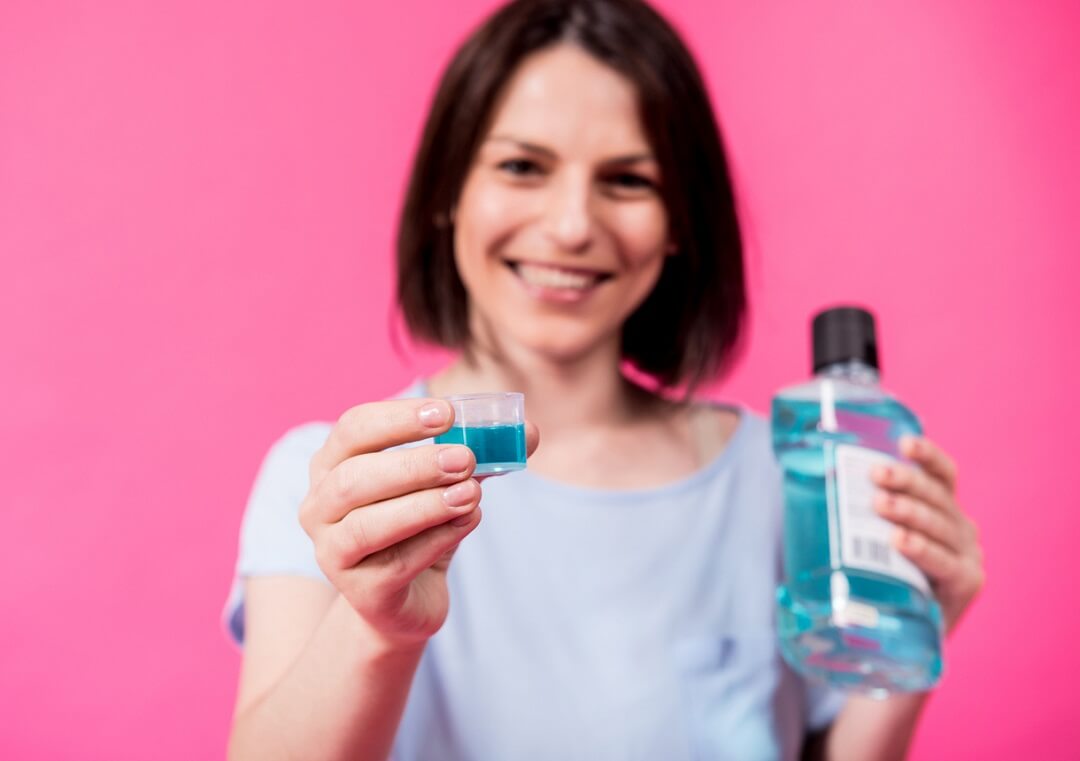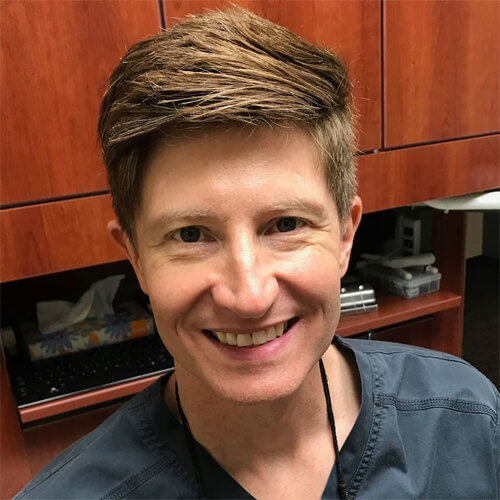Chances are mouthwash may already play a role in your everyday oral hygiene routine. One trip to the local store and you can find an aisle full of different mouthwashes all designed to help improve your oral health. But when and how should you be using this tool in order to get the best benefits?
Here we offer a comprehensive guide to mouthwash and the most effective ways to include it in your oral hygiene routine.
Key Takeaways
- Mouthwash has several benefits, including freshening breath, reducing plaque and gingivitis, fighting cavities, soothing canker sores, assisting in postoperative care, and accessing hard-to-reach areas in the mouth.
- The American Dental Association states that both using mouthwash before or after brushing can be effective, but be mindful of specific instructions on your mouthwash product.
- To use mouthwash effectively, measure the recommended amount, ensure it reaches all areas of the mouth, swish for the recommended duration, and spit it out without rinsing immediately afterward. Follow any additional instructions on the label.
- Avoid common mistakes like using mouthwash as a substitute for brushing and flossing, using too much mouthwash, swallowing it, rinsing with water immediately after, not reading the instructions, using mouthwash too frequently, and not seeking professional advice when needed.
- Be aware of potential side effects such as temporary burning or stinging sensations, dry mouth, altered taste, and oral tissue irritation. Avoid swallowing mouthwash and keep it out of reach of children.
Benefits of mouthwash
Mouthwash, also known as mouth rinse or oral rinse, can provide several benefits for oral hygiene when used as part of a regular oral care routine. Here are some potential benefits of using mouthwash:
-
- Freshens breath: One of the most popular reasons people use mouthwash is to combat bad breath. Mouthwash can help mask odors temporarily by killing bacteria that contribute to foul-smelling breath.
- Reduces plaque and gingivitis: Some mouthwashes contain antimicrobial agents, such as chlorhexidine, or essential oils like eucalyptol, thymol, or menthol. These ingredients can help reduce the amount of plaque on teeth, along with preventing or reducing gingivitis (gum inflammation).
- Fights cavities: Fluoride mouthwashes can help prevent tooth decay and strengthen tooth enamel. Fluoride is known to inhibit the growth of bacteria and promote the remineralization of teeth, which helps to prevent cavities.
- Soothes canker sores: Mouthwashes containing aloe vera or benzocaine can temporarily relieve canker sores or mouth ulcers. These ingredients may help numb the area or provide a soothing effect.
Assists in postoperative care: After dental procedures, mouthwash can be used to promote healing and reduce the risk of infection. Dentists may recommend specific mouthwashes for this purpose. - Accesses hard-to-reach areas: Mouthwash can reach areas in the mouth that brushing and flossing might miss, such as the back of the tongue or the gumline. This can provide additional protection against bacteria and plaque buildup.

When to use mouthwash?
While there is a big debate over whether you should use mouthwash before or after brushing your teeth, the truth is both can be equally effective. The American Dental Association states:
“To maximize benefit from the oral care products used, manufacturers may recommend a specific order for their use, depending on ingredients. For example, some dentifrice ingredients (like calcium hydroxide or aluminum hydroxide) can form a complex with fluoride ions and reduce a mouth rinse’s effectiveness. Therefore, vigorous rinsing with water may be recommended after brushing and before rinsing if these ingredients are present.”
Measure the appropriate amount
Pour the recommended amount of mouthwash into the cup provided, or use a suitable measuring cap if one is included. Typically, it’s about 20-30 milliliters (4-6 teaspoons) but refers to the instructions on the specific mouthwash product.
Ensure the mouthwash reaches all areas
Take the mouthwash into your mouth, swish it around, and make sure to reach all areas, including your teeth, gums, and the back of your mouth. Gargle the liquid in the back of your throat, if desired, to reach the throat and tonsil areas. Be careful not to swallow the mouthwash.
Spit out the mouthwash
After swishing, spit out the mouthwash into the sink. Avoid rinsing your mouth with water immediately afterward to allow the active ingredients to continue working.
Follow any additional instructions
Certain mouthwashes may have specific instructions, such as avoiding eating or drinking for a certain period after use. Pay attention to any additional recommendations mentioned on the product label.
Common mistakes to avoid when using mouthwash
When using mouthwash, it’s important to avoid common mistakes to ensure its effectiveness. Some common mistakes include using mouthwash as a substitute for brushing and flossing, using too much mouthwash, swallowing it instead of spitting it out, rinsing with water immediately after, not reading the instructions, using mouthwash too frequently, and not seeking professional advice when needed. By being mindful of these mistakes, you can optimize the benefits of mouthwash and maintain good oral health.
Potential side effects and precautions
While mouthwash can provide oral health benefits, it’s important to be aware of potential side effects and take necessary precautions. Some individuals may experience temporary side effects such as a burning or stinging sensation, dry mouth, or altered taste. Mouthwashes containing alcohol may cause oral tissue irritation in some individuals. Swallowing mouthwash can lead to stomach upset or intoxication, especially in children. It’s crucial to follow the recommended dosage, avoid swallowing, and keep mouthwash out of reach of children.
Mouthwash can be a valuable tool
Mouthwash provides a valuable tool in your oral hygiene routine, helping to combat bacteria, reduce the risk of cavities, and help prevent gum disease while also helping you reach those hard-to-brush areas. However, you must follow the recommended guidelines to avoid potential side effects. If you have any concerns or experience burning or stinging, it is important to talk with your dentist; they may suggest an alternative.
Helping you maintain a healthy and beautiful smile
At Soundview Family Dental, our goal is to help promote a healthy and beautiful smile. This all begins with a quality oral hygiene routine that often includes mouthwash. Our team is here to help you establish a quality oral health routine that addresses your individual oral health concerns. To learn more, call (425) 434-5997 to schedule an appointment.


